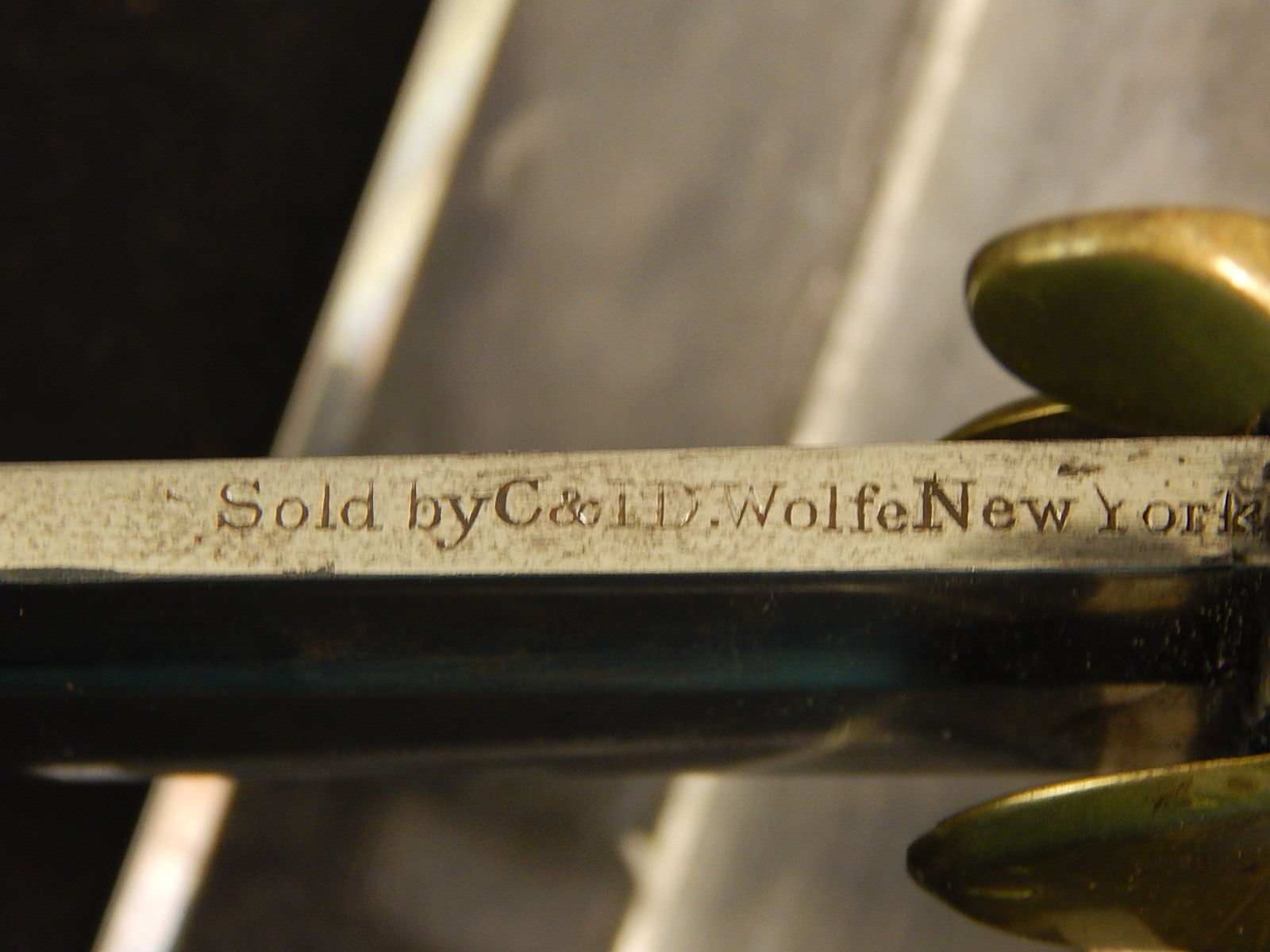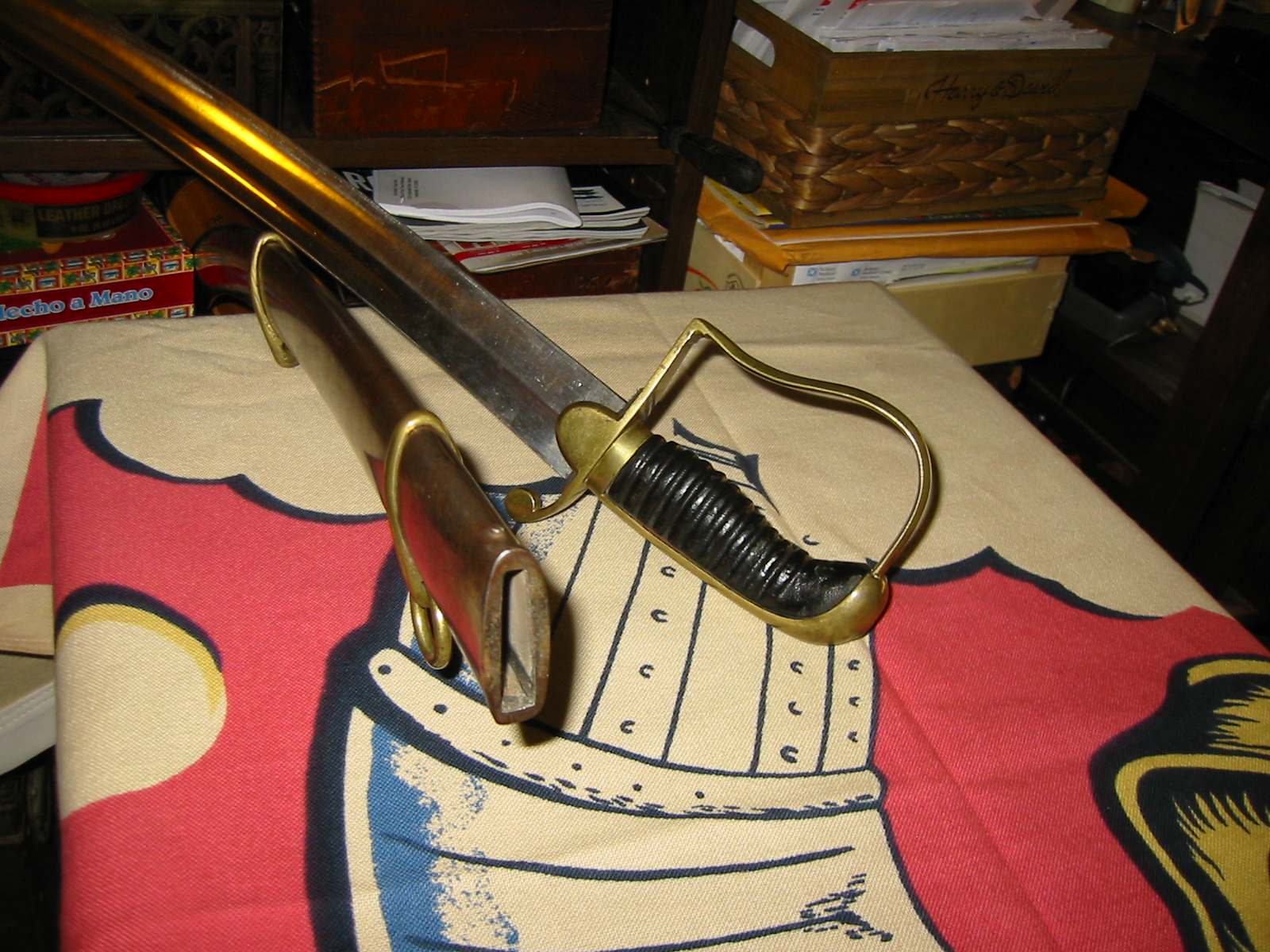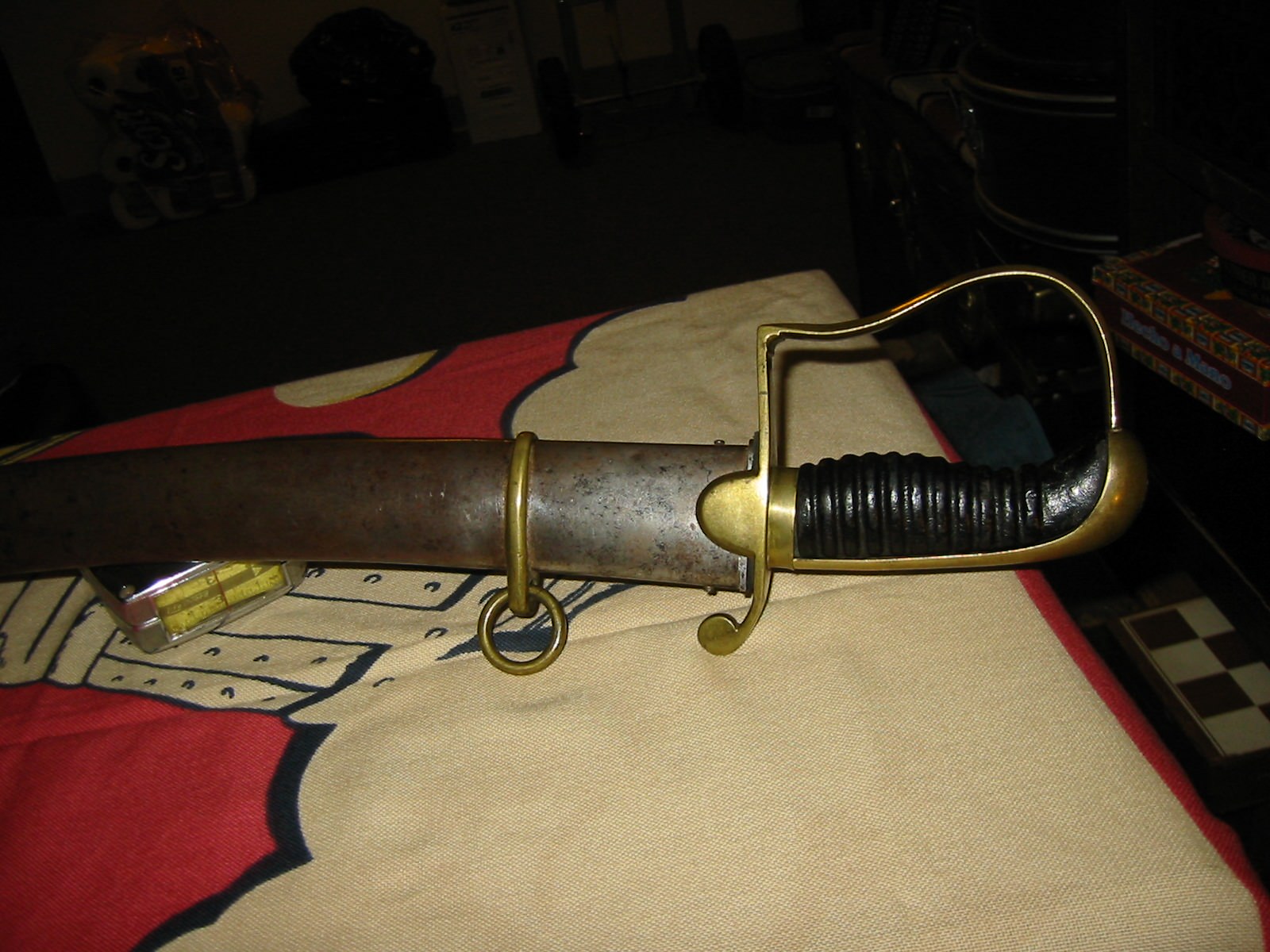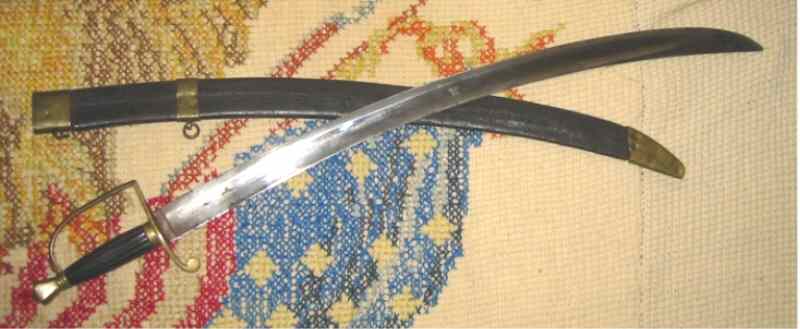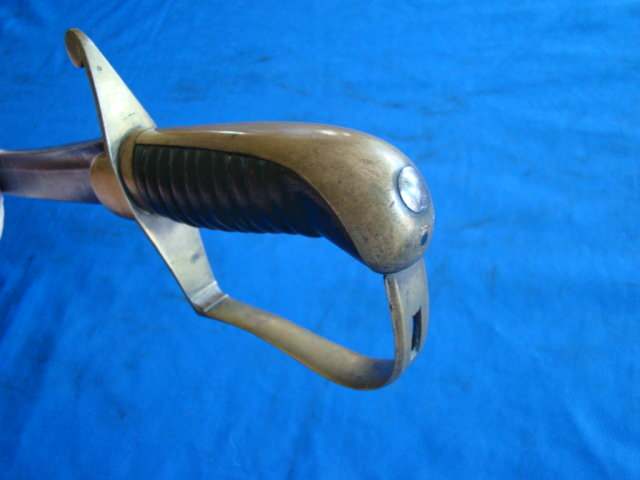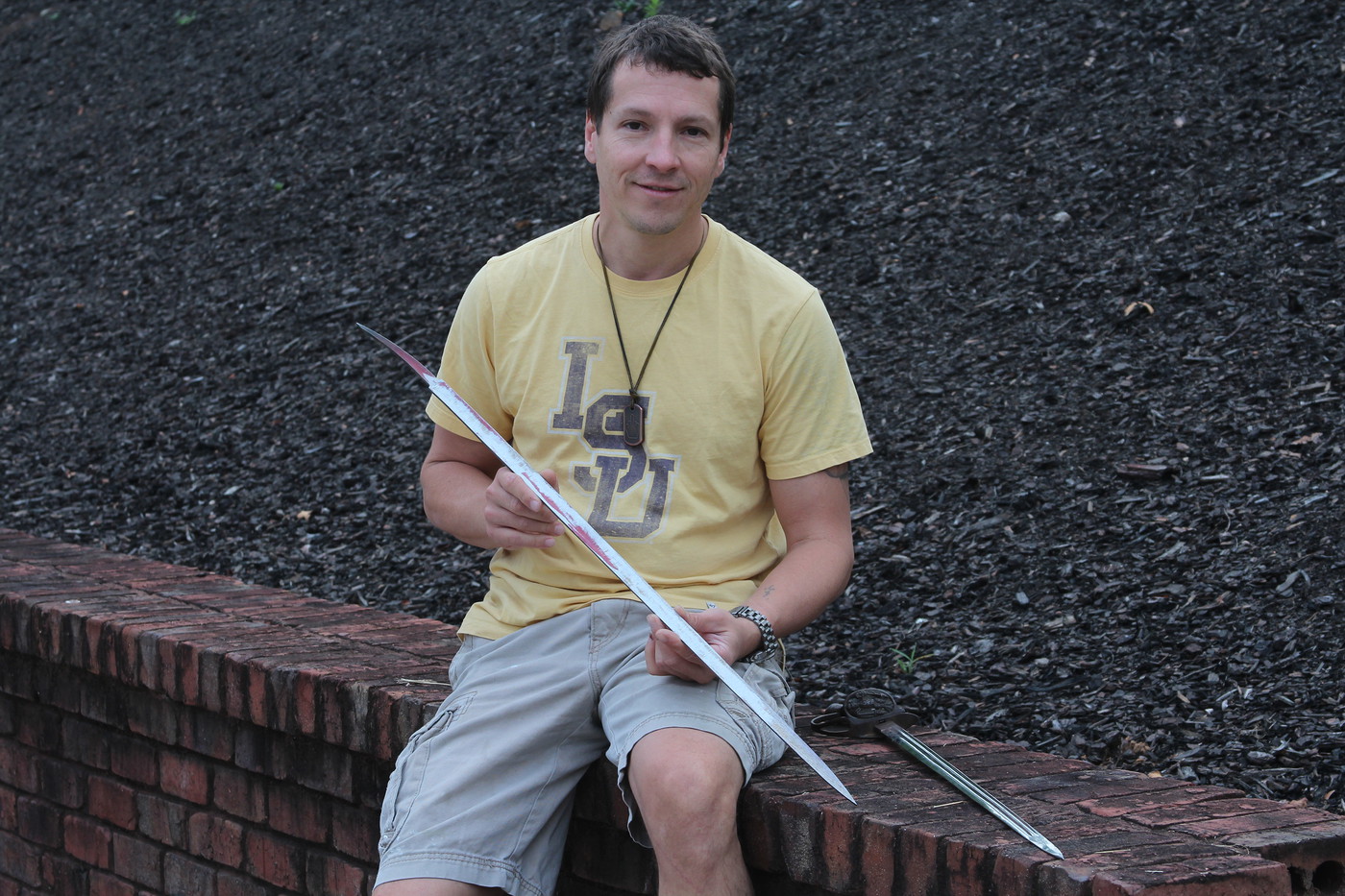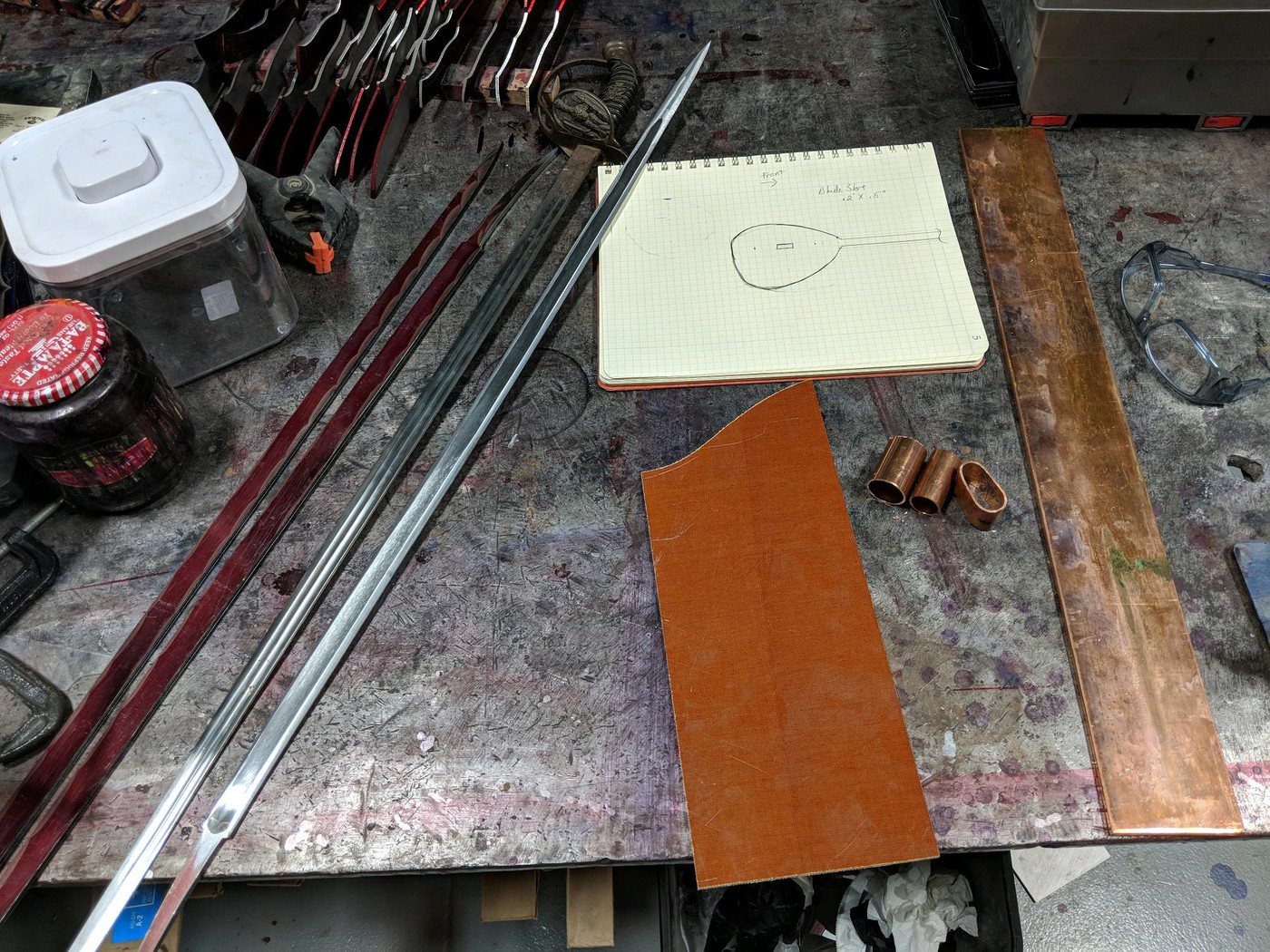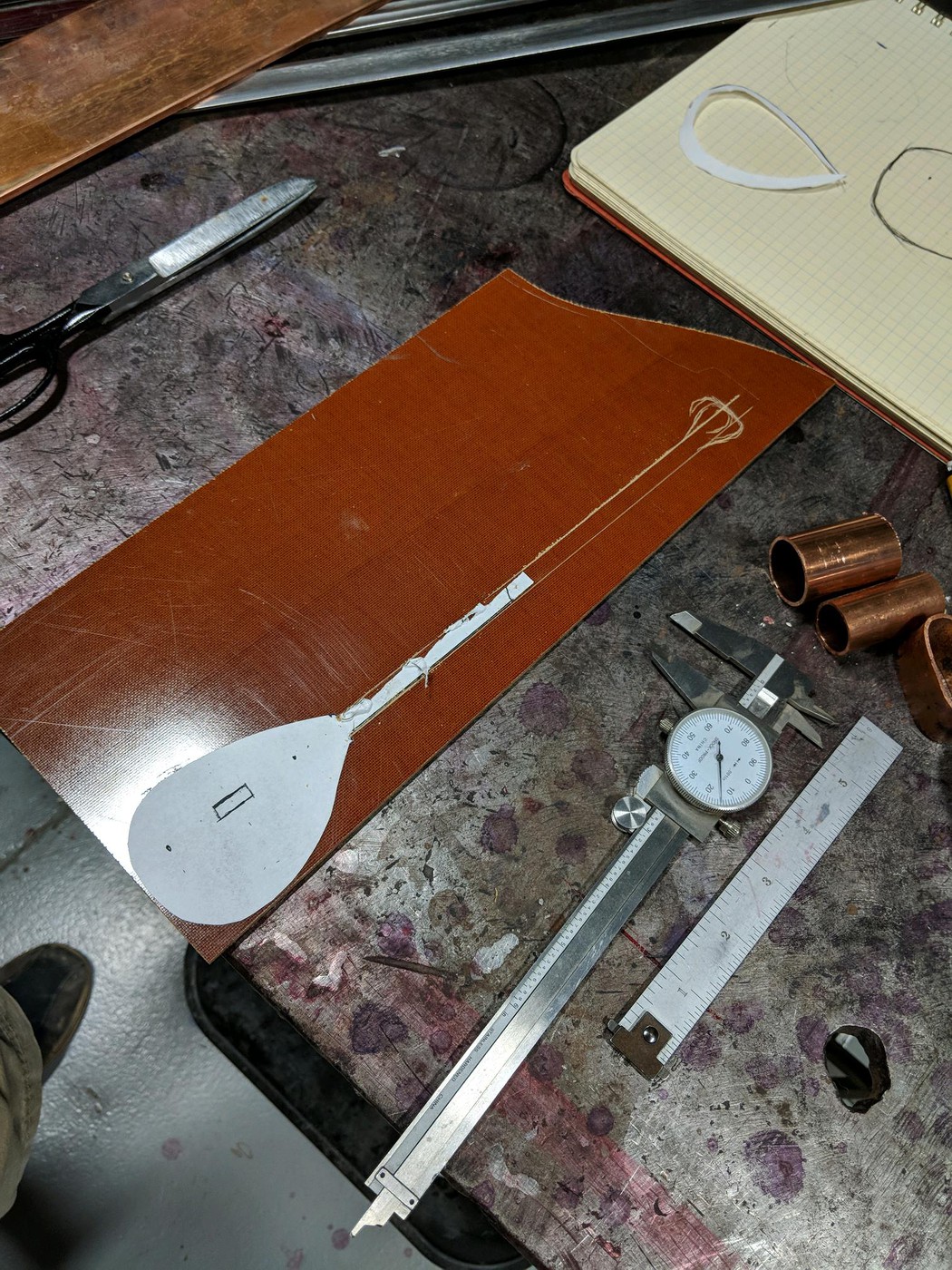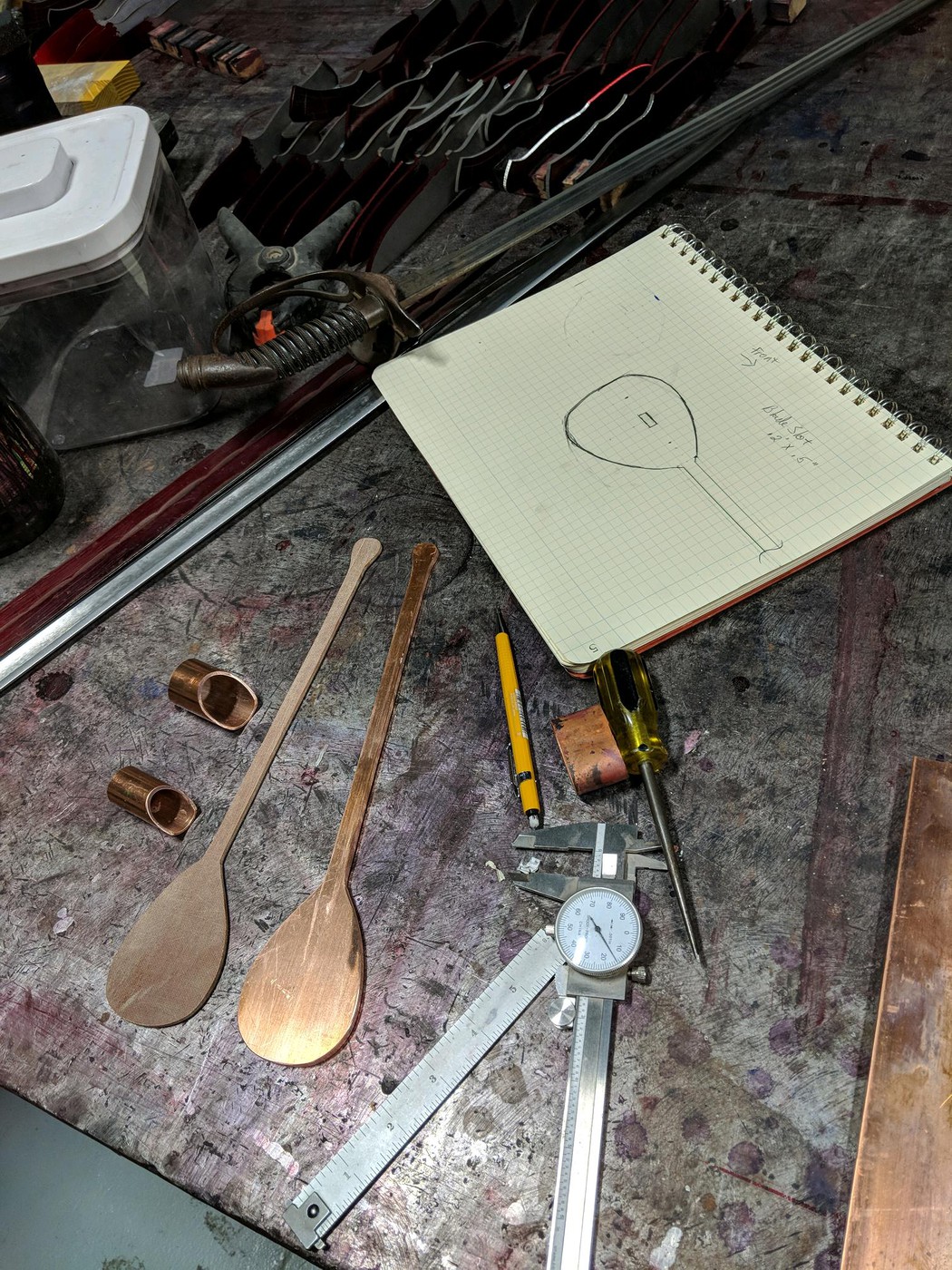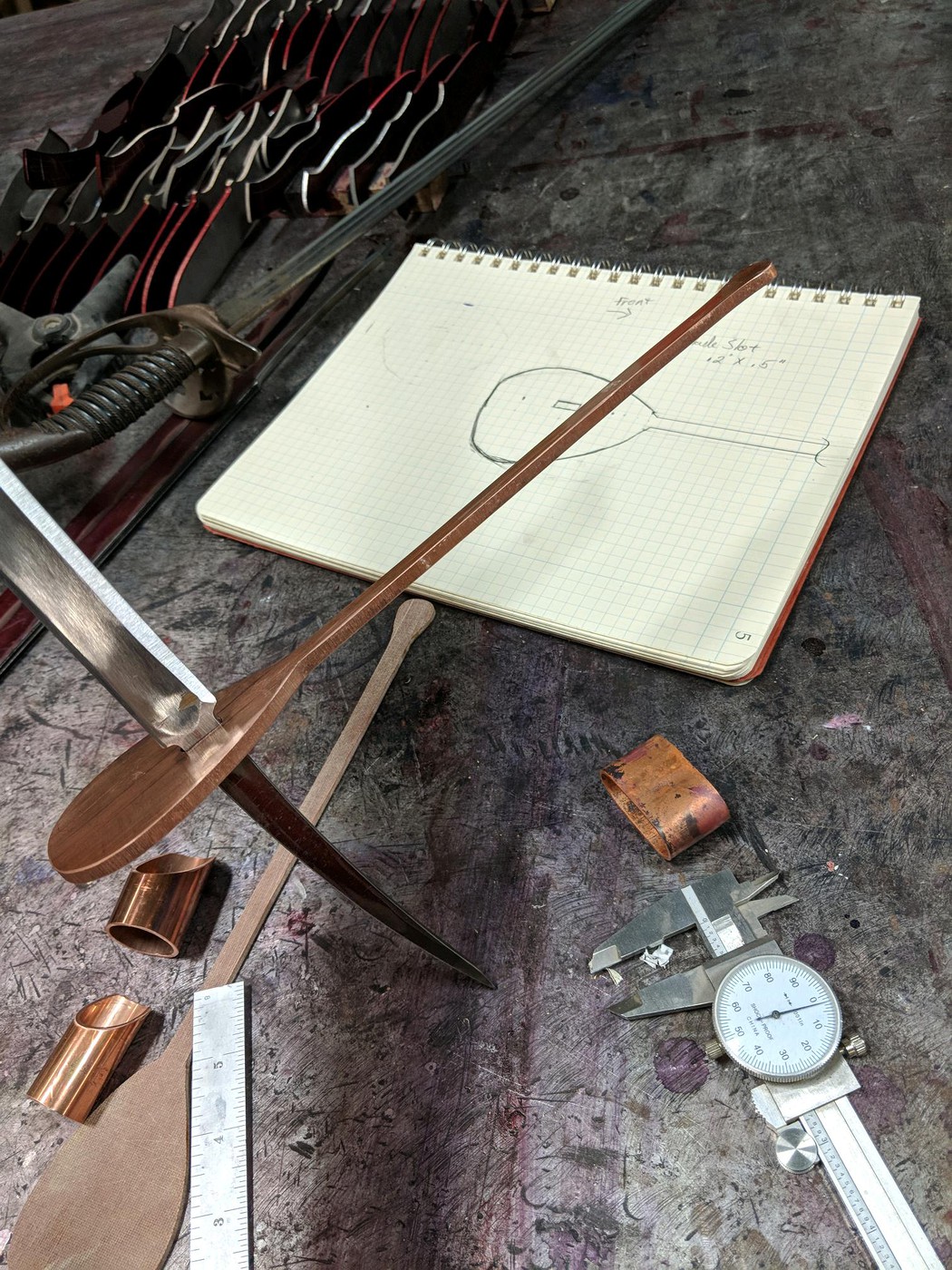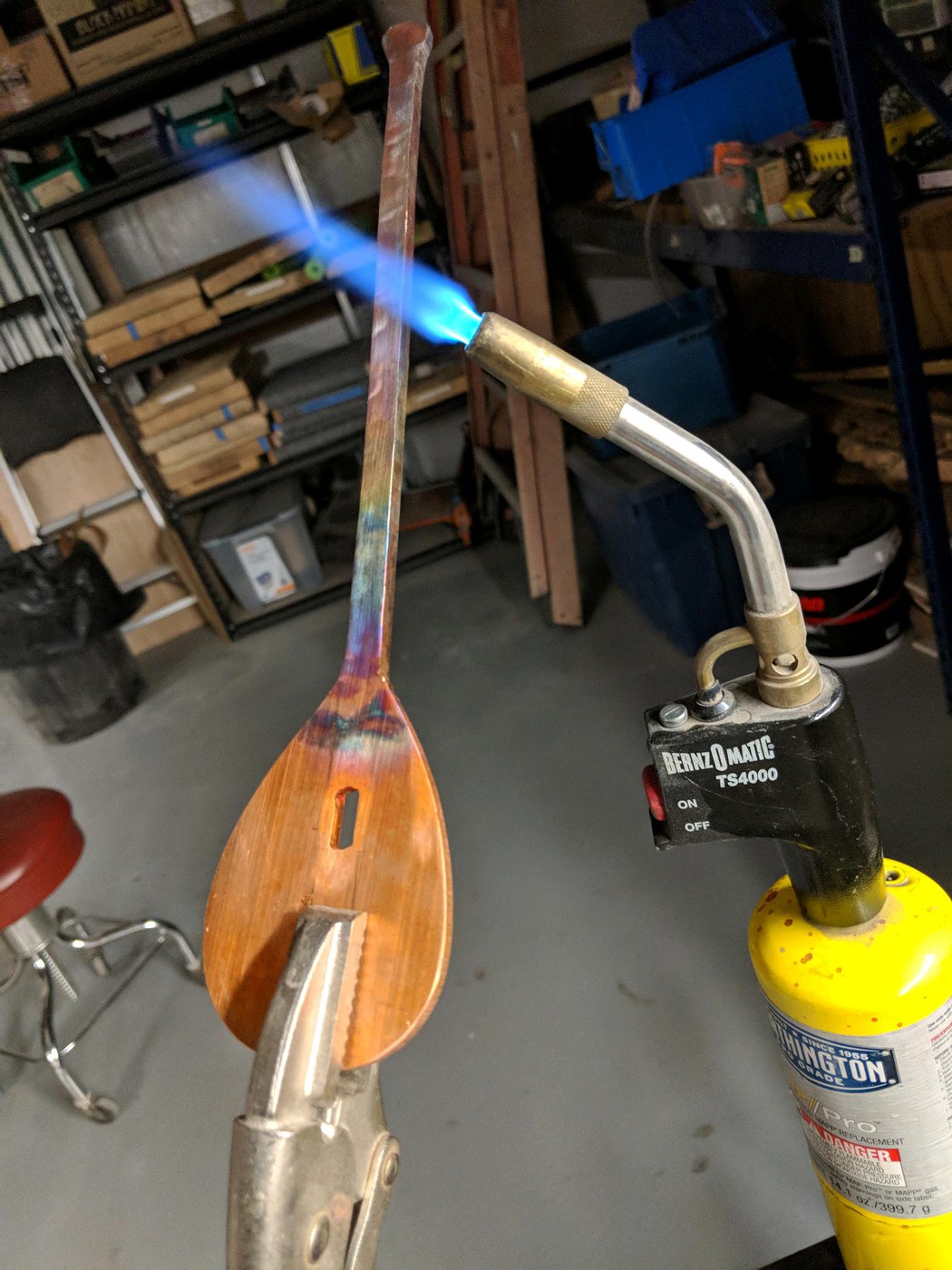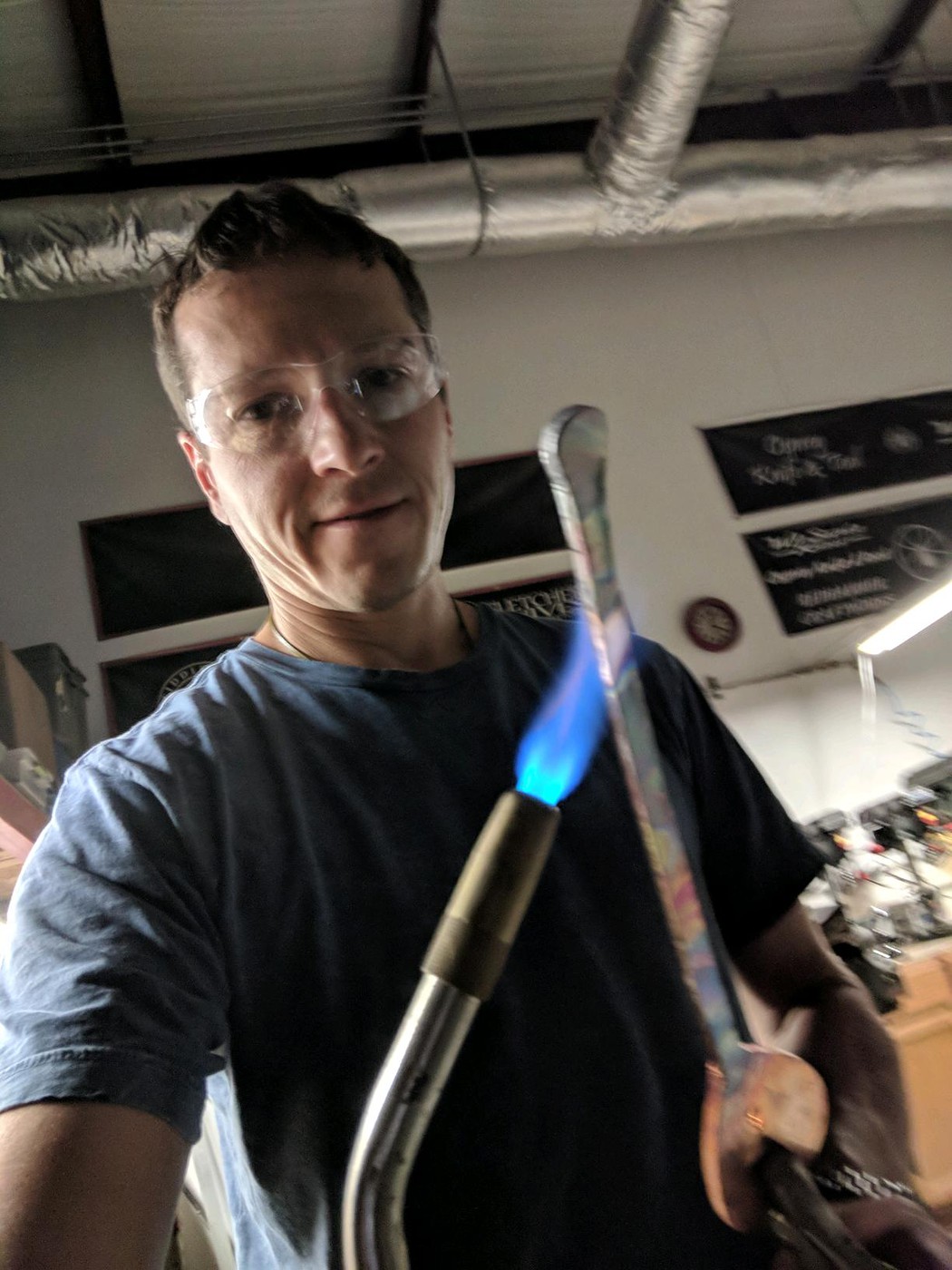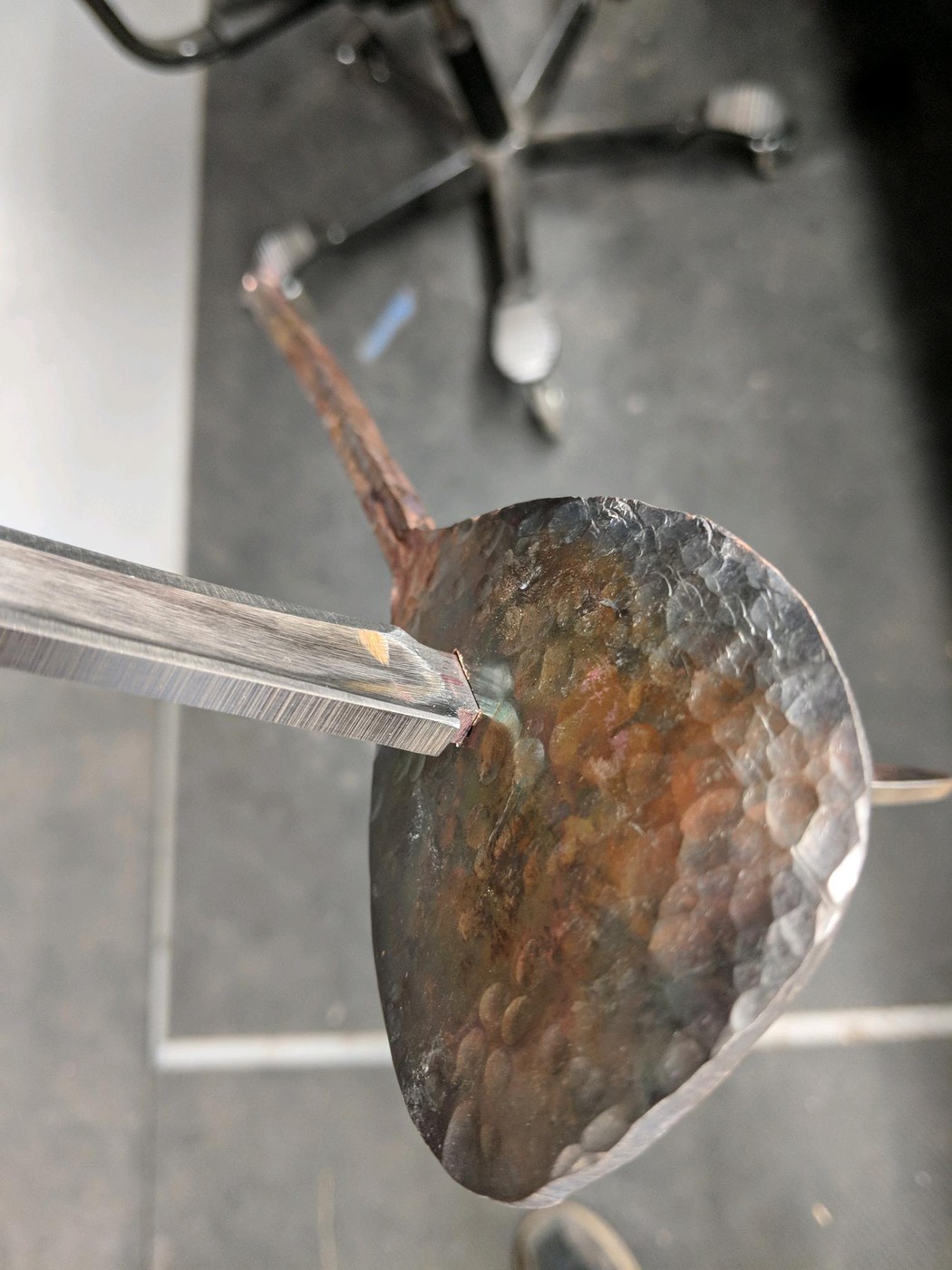Here is a sabre I outlined last summer and included some numbers. I believe I posted of it here in the past.
~~~~~~~~~~~
During a recent purchase, I had revisited The Wolfe and Spies association a bit. Hartzler had added some more paragraphs in his recent vol II. As confused as ever, the AW Spies notes seem to definitely relate two different AW Spies in NY but perhaps not. Is it is possible he married more than once?
At any rate, the topic today relates the recent purchase of a new/old stock British made cavalry sword marked to the Wolfe cousins. As crisp as new overall, only the near 200 years has shown oxidation of the scabbard, hilt and shrinkage of the grip. The blade is remarkably free of any contact.
Brass fittings on this P guard type. Showing the lack of continued distal taper refinement, this product of the 1820s has a very linear distal taper. A blade that is just 7mm at the guard, 5mm at the (8") pob, 4mm at the end of the fuller and 2mm behind the point. You'd think a pob of 8" would be off putting but with a weight of 1lb12oz, really quite handy and typical in its toylike presence overall (compared to a big line cavalry piece). 37mm wide at the guard and 32mm wide at the pop (belly) of the blade.
The original polish hard for me to capture but never sharpened, never scraped. A very few errant scratches from someone trying to remove a couple of spots
The original seated washer is present and the fit to the scabbard perfect.
A 32" blade puts it in the same territory as a British 1796 lc, and in turn handles a lot like my Starr 1818 trooper sword. With brass fittings, likely targeted for the mounted artillery roll. British made (almost without doubt) The Wolfe and Spies firms were deep in trade with British exporters.
This is a third purchase from J&J Militaria, through his ebay sales. An urn pommel sabre from him had been similarly found in unused, pristine condition. The mounted artillery sabre I had bought from him years before that was bought specifically as a mat cutting sword but similar in many ways. The latter German made, I believe and a little longer. Sharp and sound as a bell.
Snippets of the two newer Hartzler titles are viewable on Google books. With e-books quite inexpensive, it is tempting but I'd rather save for the hard books. Lots of (new to me) NYC info and I'm sure much more. The Wolfe and Spies information there as complete and concise as I have seen in one place but there is still the whole chapter of Spies in England that could probably reveal a great deal regarding English export to the USA during the first half if the 19th century.
Thanks for viewing, and as always, more is less as far as I am concerned. Bring out your Wolfe and Spies lore, as well as marked swords. I would have started a Wolfe specific thread but the two families are forever intertwined.
Cheers
GC
~~~~~~~~~~
This was added to an ongoing dump of info for the Wolfe family and A.W.Spies. Two importers of British goods. The urn pommel Harold Peterson #5 sabre all of a 25 1/2" blade and the other one 33", something like that. I've a number of both shorter and longer sabers ranging from a 1750ish era Swede to a cheapo US m1902. Most predate the 1830s but my generic wristbreaker is quite typical in its form and specifications of a Solingen 1822 type.
Cheers
GC


